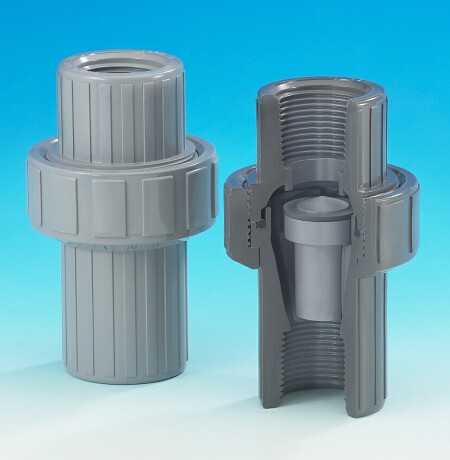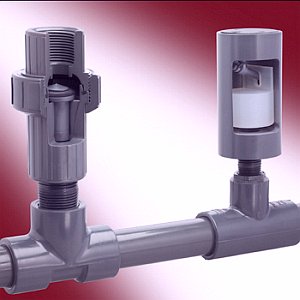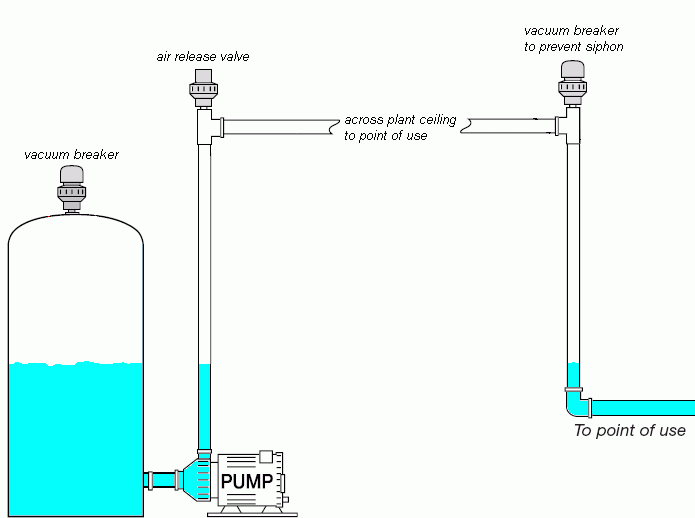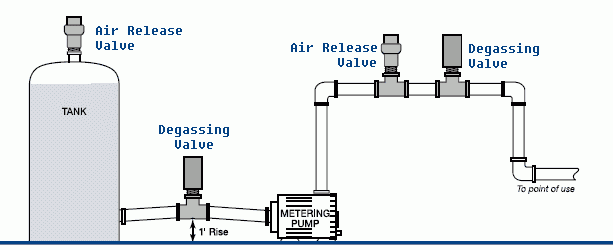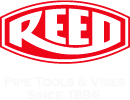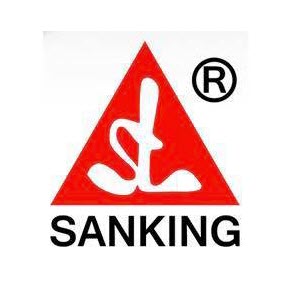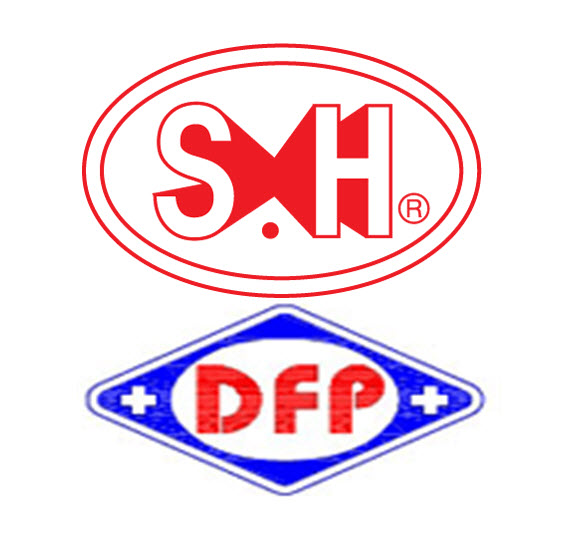Van Xả Khí (Air Release Valve) Plast-O-Matic
.jpg)
Series ARV is a normally-open valve. Until your system is pressurized, the valve is simply open, and air is present. As pressure builds within the system, unwanted air is forced to the highest point in the system, i.e., the normally-open Air Release Valve. When pressure within the system exceeds atmospheric pressure, air is expelled. As liquid rises, the poppet becomes buoyant and eventually closes. (Note minimum specific gravity of liquid must be 0.9 or higher). It is possible that trace amounts of air will remain in the system, depending on the rapidity with which the valve closes. It is also likely that some trace amounts of process liquid will be emitted. At system pressure of 10 psi (with EPDM elastomer), the poppet will seal bubble tight against the orifice. When pressure and liquid level drop, the valve will automatically re-open.1
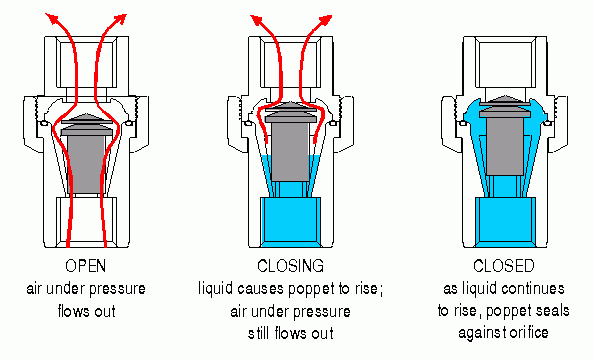
The poppet is guided by a series of thermoplastic ribs within the valve. The poppet is a unique design by Plast-O-Matic Valves, Inc. that is engineered to provide a balance of buoyancy and sealability. This balanced poppet is the key to the superior performance of this valve: It is dense enough to permit maximum emission of unwanted system air, yet buoyant enough to affect a quick seal and minimize emission of the process liquid. Historically, competitive air release valves have used ball-type sealing mechanisms that either seal too rapidly or allow excessive liquid to escape.
1 Note that although Series ARV is a normally open valve, it should not be used in lieu of a vacuum breaker due to safety considerations. Under certain conditions, a normally-open air release valve will not perform properly as a vacuum breaker.
Installation Notes
Series ARV should be installed at the highest possible point in a piping system or vessel, and it must be oriented upright. In most cases, residual liquid and/or vapor in the valve may be expelled from the outlet port just prior to valve shut-off. Therefore, it is recommended to pipe the outlet port to a safe area for hazardous liquids, or use a standpipe for non-hazardous liquids.
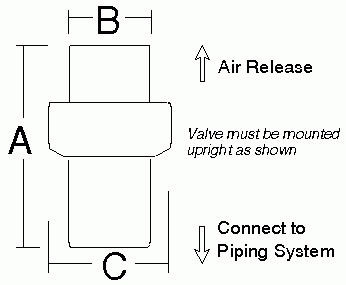
Features/Benefits:
·Safety: Allows safe expulsion of unwanted air in piping systems.
·Dependability: Unique self-guided poppet assures minimal emission of system liquid prior to sealing.
·Convenience: True-union simplifies valve inspection/removal with minimum piping breakdown.
·Minimal Closing Pressure: Closes at 0 PSI, as long as liquid is present. Valve closes as liquid rises, after virtually all unwanted air is forced out. Seals bubble tight at system pressures as low as 10 psi (EPDM seals).
·Cost Efficient: Designed to improve system performance and competitively priced.
·Superior Design: Poppet seals more reliably than ball designs; does not deform under pressure like a hollow ball.
·Corrosion Resistant: Top quality thermoplastics and elastomers resist chemical attack and protect system purity. No metal components in Series ARV.
Use of Air Release Valve with Vacuum Breakers to Prevent Siphon
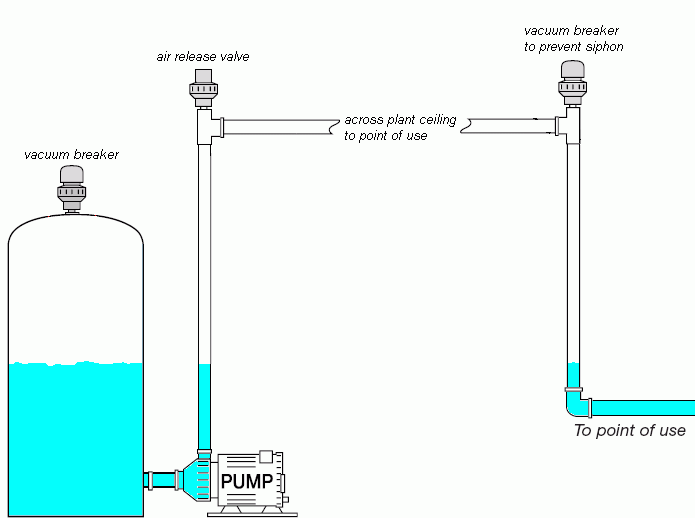 Air release valves are used mostly to expel pockets of air at system start-up, but as shown in the diagram above, they are also used in conjunction with vacuum breakers to eliminate siphon in piping systems. First, a vacuum breaker is positioned on top of the supply tank to prevent implosion when the tank is drained. A second vacuum breaker is shown on a tee to prevent siphon in a vertical drop. This creates a pocket of air in the riser, lateral line, and drop to "break" the suction that would otherwise be created in the drop when the pump is turned off. The blue color indicates liquid in the system when the pump is turned off. When the system is re-started, an air release valve positioned along the high point of the pipeline is necessary to expel the air pocket for safe and efficient operation. Additional air release valves may be necessary at other points, depending upon the size and complexity of the pipeline. Placement of degassing valves (not shown) varies from system to system.
Air release valves are used mostly to expel pockets of air at system start-up, but as shown in the diagram above, they are also used in conjunction with vacuum breakers to eliminate siphon in piping systems. First, a vacuum breaker is positioned on top of the supply tank to prevent implosion when the tank is drained. A second vacuum breaker is shown on a tee to prevent siphon in a vertical drop. This creates a pocket of air in the riser, lateral line, and drop to "break" the suction that would otherwise be created in the drop when the pump is turned off. The blue color indicates liquid in the system when the pump is turned off. When the system is re-started, an air release valve positioned along the high point of the pipeline is necessary to expel the air pocket for safe and efficient operation. Additional air release valves may be necessary at other points, depending upon the size and complexity of the pipeline. Placement of degassing valves (not shown) varies from system to system.
Thông số kỹ thuật
|
Available in Geon® PVC & Corzan® CPVC |
|||||||||
|
Series ARV |
A |
B |
C |
Model Number |
|||||
|
IN. |
mm |
IN. |
mm |
IN. |
mm |
||||
|
1/2" |
5.3 |
130 |
1.9 |
48 |
2.8 |
72 |
ARV050EPT-PV |
||
|
3/4" |
5.3 |
130 |
1.9 |
48 |
2.8 |
72 |
ARV075EPT-PV |
||
|
1" |
4.7 |
120 |
1.9 |
48 |
2.8 |
72 |
ARV100EPT-PV |
||
|
ARV(series) 050(size) EP(seal material) T(threaded) - PV(body material) |
|||||||||
|
Additional Specifications |
|||||||||
|
Pressure required for bubble-tight seal |
EPDM Elastomer: 10 PSI |
Viton Elastomer: 15 - 20 PSI |
|||||||
|
Pressure Rating at 70ºF |
150 PSI |
||||||||
|
Maximum Air Flow Rate** |
Air Flow Rate: 8 SCFM |
Liquid Flow Rate: 60 GPM |
|||||||
|
**Note that excess of 8 SCFM airflow out of the valve will have sufficient force to lift and close the poppet, even though more air may be in the system. Liquid pumping into the system at flow rate exceeding 60 GPM (225 LPM) will create airflow in excess of 8 SCFM. |
|||||||||



























